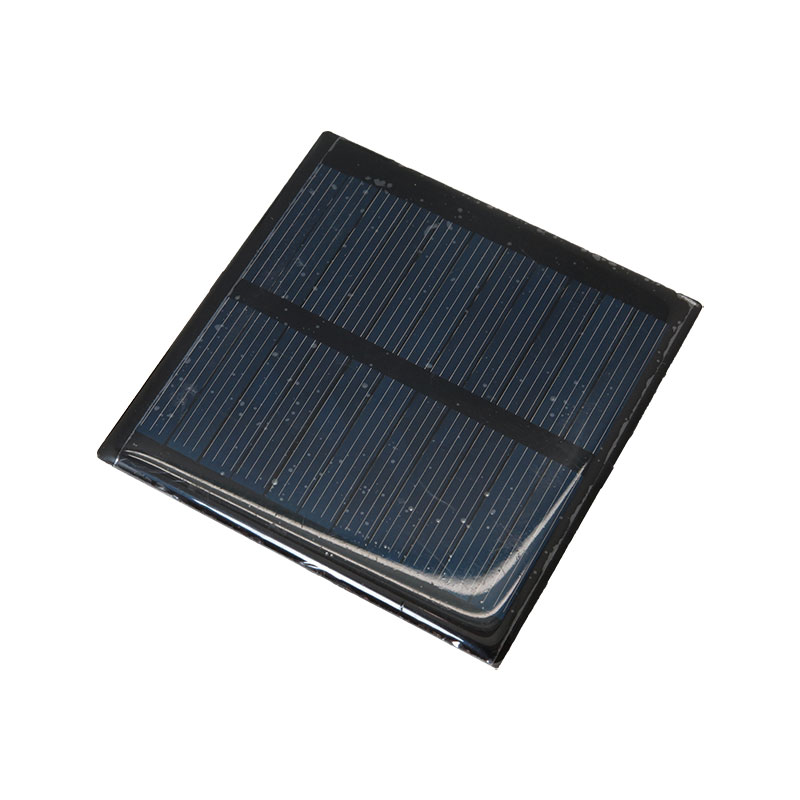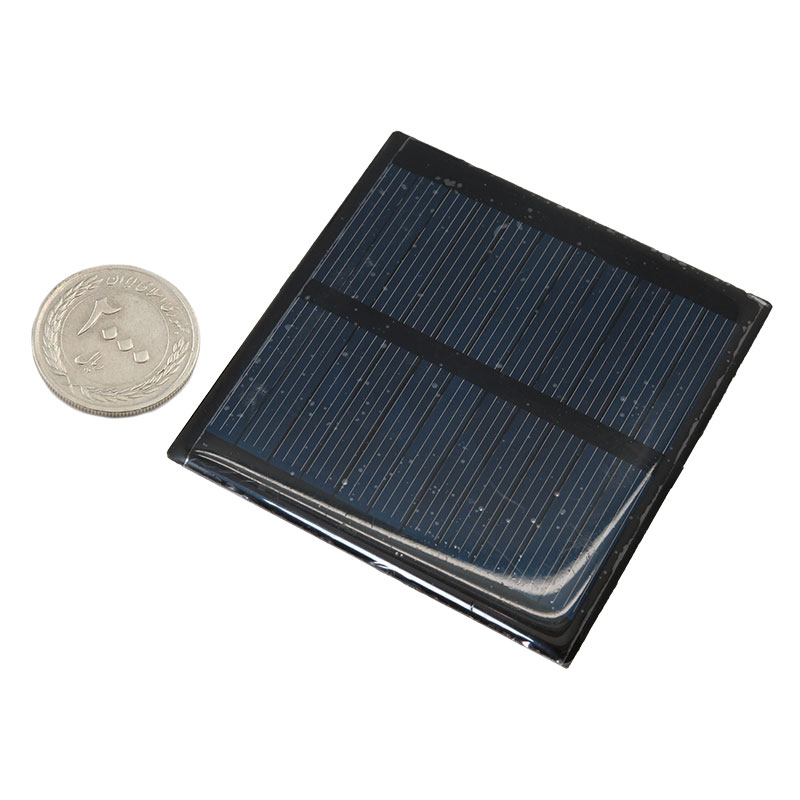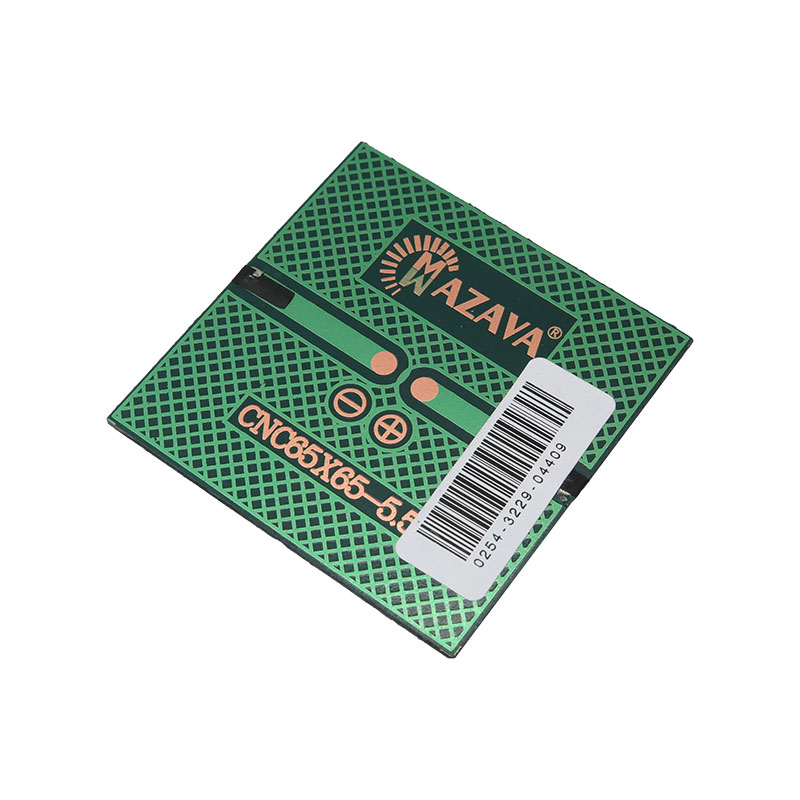موجودی انبار : 221 عدد
4 از 5.0 با 9 رای
پنل خورشیدی 5.5 ولت 0.6 وات - باتری خورشیدی 5 ولت
این کالا استوک می باشد.
پنل خورشیدی 5.5 ولت 0.6 وات یک ماژول خورشیدی کوچک و کاربردی است که برای تأمین انرژی دستگاههای کم مصرف طراحی شده است. این پنل با راندمان تبدیل 21 تا 24 درصد، گزینهای ایدهآل برای پروژههای الکترونیکی، سیستمهای IoT و سنسورهای بیسیم محسوب میشود.
این ماژول خورشیدی 5.5V برای شارژ باتریهای لیتیوم و سایر باتریهای کوچک مورد استفاده قرار میگیرد و میتواند بهعنوان منبع تغذیه پایدار برای سیستمهای سنسور بیسیم عمل کند. با توجه به اندازهی کوچک و وزن سبک، این پنل خورشیدی مینیاتوری برای استفاده در انواع پروژههای DIY و کاربردهای تحقیقاتی مناسب است.
این محصول به عنوان یک باتری / پنل خورشیدی 5.5 ولت 0.6 وات برای تأمین انرژی دستگاههای مختلف به کار میرود. ساختار پنل با استفاده از رزین اپوکسی باعث افزایش مقاومت در برابر فشار، خوردگی و شرایط محیطی مختلف میشود. به همین دلیل، این محصول برای استفاده در محیطهای باز و شرایط متغیر آب و هوایی بسیار مناسب است. ویژگیهای فنی این پنل شامل ولتاژ مدار باز 6.7 ولت، جریان اتصال کوتاه 122 میلیآمپر، ولتاژ کاری 5.5 ولت و جریان کاری 109 میلیآمپر میباشد.
پنل خورشیدی کوچک برای پروژههای الکترونیکی طراحی شده است و با کیفیت ساخت بالا، طول عمر طولانی و بازدهی مناسب، یکی از بهترین گزینهها برای تأمین انرژی در تجهیزات کم مصرف خورشیدی محسوب میشود. اگر به دنبال یک منبع انرژی پاک، مقرون به صرفه و پایدار هستید، این پنل میتواند انتخاب ایدهآلی برای شما باشد.
این پنل خورشیدی مینیاتوری برای سیستمهای IoT بصورت گسترده استفاده میگردد
کاربرد :
- تامین انرژی برای سیستمهای بیسیم و سنسورها
- استفاده در پروژههای الکترونیکی کوچک
- شارژ باتریهای کوچک در پروژههای مستقل
مشخصات فنی :
- توان خروجی: 0.6 وات
- بازدهی تبدیل: 24 ~ 21 درصد با تلرانس 2 درصد
- ولتاژ مدار باز: 6.7 ولت
- جریان اتصال کوتاه: 122 میلی آمپر
- ولتاژ کاری: 5.5 ولت
- جریان کاری: 109 میلی آمپر
- اندازه محصول: 65 × 65 میلی متر
Description:
The epoxy solar panel is used to charging the battery of solar charger, solar light, toy, and other small solar application electronic products.
A photovoltaic (PV) cell, also known as a solar cell, is an electronic component that generates electricity when exposed to photons or particles of light. A photovoltaic system employs solar modules, each comprising a number of solar cells, which generate electrical power. PV installations may be ground-mounted, rooftop mounted, wall-mounted, or floating. The mount may be fixed or use a solar tracker to follow the sun across the sky. Efficiency is the ratio of electrical power produced by the cell to the amount of sunlight it receives. To measure efficiency, the cells are combined into modules, which are in turn assembled into arrays. The resulting panels are then placed in front of a solar simulator that mimics ideal sunlight conditions: 1,000 watts (W) of light per cubic meter at an ambient temperature of 25°C. The electrical power produced by the system, or peak power, is a percentage of the incoming solar energy. If a panel measuring one square meter generates 200 W of electrical power, it has an efficiency of 20%. The maximum theoretical efficiency of a PV cell is around 33%.
After hydro and wind powers, PV is the third renewable energy source in terms of global capacity. The International Energy Agency expects growth by 700 - 880 GW from 2019 to 2024.
The epoxy solar panel has the characteristics of high production speed, pressure and corrosion resistance, and low cost. solar cells are covered with epoxy resin and bonded with PCB circuit boards.
Application:
Power supply for wireless systems and sensors
Use in small electronic projects
Charging small batteries in standalone projects
Features:
Power: 0.6W
Conversion efficiency: 21 ~ 24% (± 2%)
Open circuit voltage: 6.7V
Short circuit current: 122mA
Working voltage: 5.5V
Working current: 109mA
Product Size: 65 x 65 (± 0.2mm)


